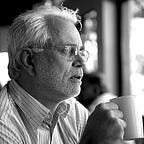The corpse that changed color
West Virginia man Hugh Earnshaw was having a normal open-casket funeral … until Hugh started coming back to life.
Doctors and Medical Ethicists were stumped by the strange case of Charleston, West Virginia woman Val Thomas, who was rushed to the hospital after suffering a catastrophic heart attack on May 3, 2008. Declared brain dead after a second then a third attack, and showing skin hardening and rigor mortis, the family unplugged life support after 17 hours of zero brain activity. As the nurse muttered, “I’m so sorry, Mrs. Thomas,” the woman abruptly replied, “That’s okay, honey, that’s okay.”
As bizarre as Val Thomas’ “Lazarus” case was, the case of fellow West Virginian Hugh Earnshaw 104 years earlier is equally perplexing.
Hugh Quantrill Earnshaw was born March 12, 1877 in Charles Town, Jefferson County, the first born of William and Clara Anna Avis Earnshaw. Hugh’s father worked as a bar owner until 1895, when he purchased a lot on the corner of Liberty and Charles Streets from his father-in-law, John Avis. There he built a huge two-story “business house,” with a bar and restaurant on the ground floor and a billiard parlor on the second, called the Liberty Street Saloon and Restaurant.
Like most teenage boys of that time, Hugh did odd jobs and went to school until Dec. 1, 1894, when at age 17 he married Halltown native Fannie Propst, who herself was only a week shy of her 18th birthday. After a ceremony and brief honeymoon in Hagerstown, Maryland, the couple moved in with Hugh’s parents, his younger sisters Essie and Nellie, and brother Ellis on West Liberty Street. On May 22, 1896, Hugh and Fannie celebrated the birth of their son, Fred.
The next year Hugh went to work as a clerk in his father’s business. In the January 5, 1897 issue of the weekly Spirit of Jefferson newspaper, the editors stated they were delighted by the “genial countenance of our clever young friend Hugh Earnshaw,” as he delivered to them a “demijohn” (a bottle holding from 3 to 10 gallons, enclosed in a wicker covering) of seven-year-old whiskey as a gift from his father at the saloon.
Life seemed good for the Earnshaw family until September 2, 1902, when Hugh’s 15-year-old sister Essie died of Typhoid fever.
Then, 17 months later two more consecutive tragedies struck the family. According to the Jefferson County death records, on February 22, 1904, 27-year-old Hugh died suddenly of an apparently undiagnosed heart defect. Then exactly one week later, on March 2, his father, William, died of a complication from an unknown disease.
But it was what happened later to Hugh that stunned all of Charles Town and possibly ran an undertaker out of business.
Hugh’s body had been taken to the mortuary under the care of undertaker Charles R. Rissler and supposedly prepared for burial. But on February 25, during the open-casket funeral service, Hugh’s pale face suddenly turned red.
Family and friends gasped and looked closer, only to be mortified when his lips started moving, and his eyes began opening and closing.
Hugh seemed to be coming back to life.
Horrified, the minister paused the service while someone summoned at least two Charles Town doctors. They examined the body and according to the press began administering “restoratives” (probably period stimulants like digitalis, nitroglycerin or strophanus) in the hopes of bringing him back to consciousness.
Unlike Thomas, Hugh did not awake and announce everything was okay but was left in his casket overnight, where his face remained red and his lips moving. According to an account in the Richmond Dispatch, the next morning the body again turned pale. Convinced he was truly now dead, the family buried him in Edge Hill Cemetery on E. Hunter Street.
Without more information, any explanation of Earnshaw’s condition or the action of his undertaker is strictly speculative. The undertaker, Rissler, had been a local auctioneer for many years but according to the May 9, 1899 Spirit of Jefferson sometime earlier that year he went to Baltimore to “learn the art of embalming.” On June 6 he purchased his undertaking supplies and on June 20 he announced that he had purchased a “handsome hearse” and took over the business of Mr. Lewis Starry in Charles Town, where his “embalming diploma” was prominently displayed in the show window of a Mr. Beard.
The November 7, 1899 paper then announced that Rissler passed his “art of embalming” exam at the state board of embalmers at Martinsburg that year. Rissler began running newspaper ads every week stating he “will do embalming according to the latest and most approved modes.”
Whatever happened between Rissler and Earnshaw may have negatively impacted Rissler’s Charles Town embalming business, as there is no record of him advertising or working as an undertaker after 1904. He did, however, continue to work as an auctioneer before dying on February 27, 1919, in the state mental hospital in Weston, West Virginia, where he had been a patient for ten days.
Hugh Earnshaw’s wife Fannie died in 1960 at age 86 in Halltown. It is unknown if she ever talked about the peculiar circumstances of the death of her beloved husband, the “corpse that changed color.”
Read more at www.dalebrumfield.net
